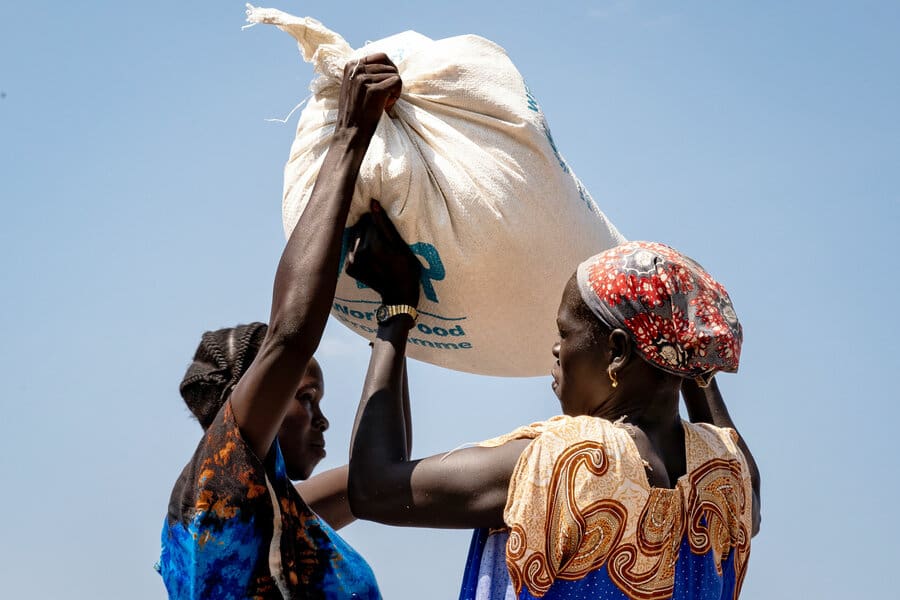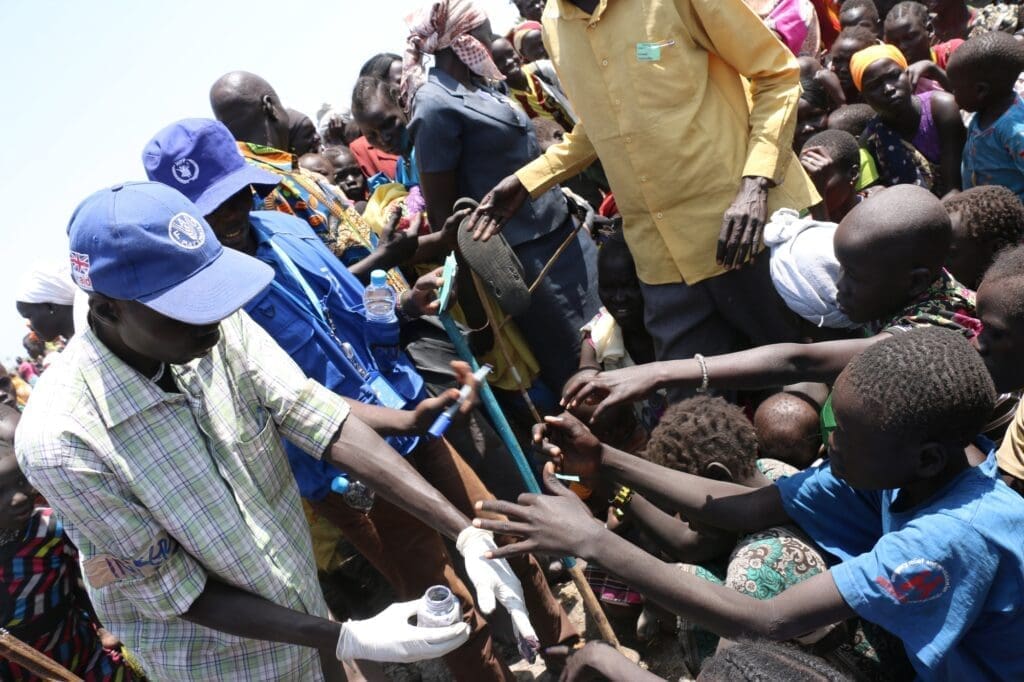This Is How We Reach Families Threatened by Famine in South Sudan

Famine in South Sudan is affecting about 100,000 people who have received limited humanitarian assistance for months – if not years – because of recurrent fighting and other obstacles to relief organizations in Leer, Mayendit and Koch counties.
The United Nations World Food Programme (WFP) is doing its utmost to reach people with the most acute needs, through emergency rapid response teams active in areas including Thonyor, Leer County.
Here, an inter-agency rapid response mission was deployed in February to provide assistance to about 36,000 people.

A WFP helicopter arrives with supplies of nutrition items and vegetable oil to be distributed to people in need of assistance.
Two-year-old Nyantaba Gakier and her family had been living on an island for eight months after they fled fighting in their home village of Meer in Unity State of South Sudan.
Nyantaba was admitted for malnutrition treatment immediately after a health screening.
Meanwhile,

In South Sudan, mothers like Nyalel Mayang don’t have access to modern healthcare. She and her husband have three children, and they survived on water lilies and palm nuts for three months after their village was attacked.
Meanwhile Nyalel Mayang, her husband and three children have come to Thonyor to receive humanitarian assistance. They had been hiding on an islet in the swamps for three months after their village was attacked. They ate water-lily and palm nuts.
The U.N. World Food Programme team provided specialized food to treat malnourished mothers and young children.
The first job for the rapid response team in Thonyor was to conduct a head count and registration, to verify how many people were there.
This lets the U.N. World Food Programme team know how much food they need to airdrop, so that food distributions can start as soon as possible.
Rapid response teams have been deployed also to Koch, Mayendit and Panyjiar counties, where they are providing food and nutrition support to tens of thousands of people.

A member of the WFP rapid response team inks children during a head count and registration.
U.N. World Food Programme teams are working with partners including UNICEF, FAO, WHO and MedAir to provide an integrated package of nutrition and health support.




